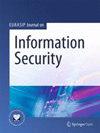使用网络元数据检测非法加密挖掘
IF 2.5
Q2 COMPUTER SCIENCE, INFORMATION SYSTEMS
引用次数: 6
摘要
非法加密货币挖掘已经成为计算机安全事件货币化的普遍方法之一。在这种攻击中,受害者的计算资源被滥用来挖掘加密货币,从而使攻击者受益。最受欢迎的非法开采数字货币是门罗币,因为它提供了强大的匿名性,并且在cpu上有效地开采。非法挖矿主要依赖于受损系统和远程矿池之间使用事实上的标准协议Stratum的通信。虽然之前的研究主要集中在基于端点的浏览器内挖掘检测上,但在本文中,我们一般讨论基于网络的加密挖掘恶意软件检测。我们提出XMR-Ray,一种机器学习检测器,使用基于原始NetFlow记录重建地层协议的新特征。我们的检测器仅使用挖掘流量进行离线训练,不需要隐私敏感的正常网络流量,这有助于其采用和集成。在我们的实验中,XMR-Ray的检测率达到98.94%,虚警率为0.05%,优于最接近的竞争对手。我们的评估进一步表明,它可靠地检测以前未见过的矿池,对加密和代理等常见混淆技术具有鲁棒性,并且适用于在浏览器中或通过编译的二进制文件进行挖掘。最后,通过在大型大学网络中部署我们的检测器,我们展示了它在保护现实世界系统方面的有效性。本文章由计算机程序翻译,如有差异,请以英文原文为准。
Detection of illicit cryptomining using network metadata
Illicit cryptocurrency mining has become one of the prevalent methods for monetization of computer security incidents. In this attack, victims’ computing resources are abused to mine cryptocurrency for the benefit of attackers. The most popular illicitly mined digital coin is Monero as it provides strong anonymity and is efficiently mined on CPUs.Illicit mining crucially relies on communication between compromised systems and remote mining pools using the de facto standard protocol Stratum. While prior research primarily focused on endpoint-based detection of in-browser mining, in this paper, we address network-based detection of cryptomining malware in general. We propose XMR-Ray, a machine learning detector using novel features based on reconstructing the Stratum protocol from raw NetFlow records. Our detector is trained offline using only mining traffic and does not require privacy-sensitive normal network traffic, which facilitates its adoption and integration.In our experiments, XMR-Ray attained 98.94% detection rate at 0.05% false alarm rate, outperforming the closest competitor. Our evaluation furthermore demonstrates that it reliably detects previously unseen mining pools, is robust against common obfuscation techniques such as encryption and proxies, and is applicable to mining in the browser or by compiled binaries. Finally, by deploying our detector in a large university network, we show its effectiveness in protecting real-world systems.
求助全文
通过发布文献求助,成功后即可免费获取论文全文。
去求助
来源期刊

EURASIP Journal on Information Security
COMPUTER SCIENCE, INFORMATION SYSTEMS-
CiteScore
8.80
自引率
0.00%
发文量
6
审稿时长
13 weeks
期刊介绍:
The overall goal of the EURASIP Journal on Information Security, sponsored by the European Association for Signal Processing (EURASIP), is to bring together researchers and practitioners dealing with the general field of information security, with a particular emphasis on the use of signal processing tools in adversarial environments. As such, it addresses all works whereby security is achieved through a combination of techniques from cryptography, computer security, machine learning and multimedia signal processing. Application domains lie, for example, in secure storage, retrieval and tracking of multimedia data, secure outsourcing of computations, forgery detection of multimedia data, or secure use of biometrics. The journal also welcomes survey papers that give the reader a gentle introduction to one of the topics covered as well as papers that report large-scale experimental evaluations of existing techniques. Pure cryptographic papers are outside the scope of the journal. Topics relevant to the journal include, but are not limited to: • Multimedia security primitives (such digital watermarking, perceptual hashing, multimedia authentictaion) • Steganography and Steganalysis • Fingerprinting and traitor tracing • Joint signal processing and encryption, signal processing in the encrypted domain, applied cryptography • Biometrics (fusion, multimodal biometrics, protocols, security issues) • Digital forensics • Multimedia signal processing approaches tailored towards adversarial environments • Machine learning in adversarial environments • Digital Rights Management • Network security (such as physical layer security, intrusion detection) • Hardware security, Physical Unclonable Functions • Privacy-Enhancing Technologies for multimedia data • Private data analysis, security in outsourced computations, cloud privacy
 求助内容:
求助内容: 应助结果提醒方式:
应助结果提醒方式:


